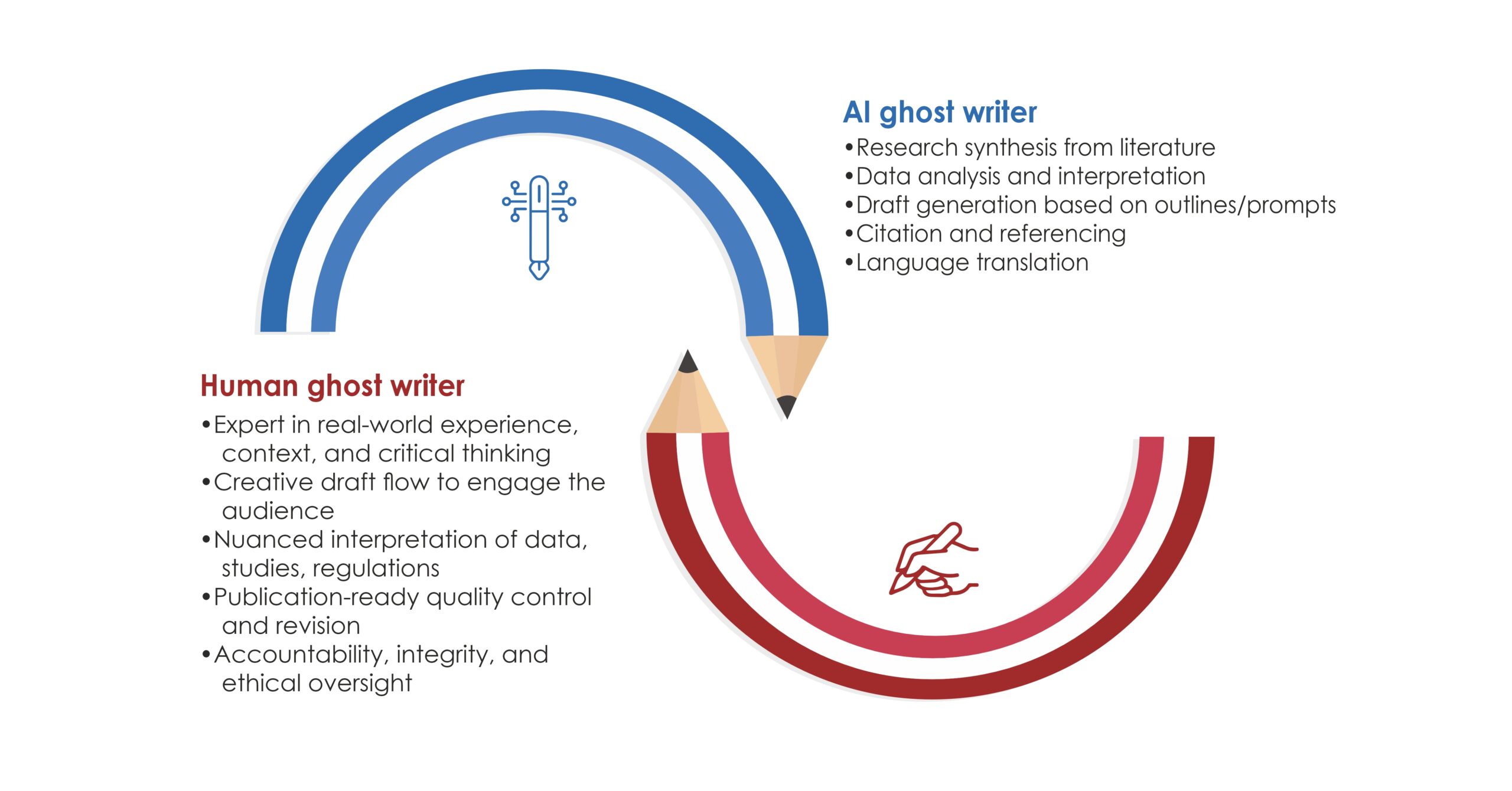
In the world of medical and scientific publishing, ghost-writing has long been a common practice. Researchers, doctors, and subject matter experts often collaborate with professional writers to transform their raw data, insights, and technical knowledge into polished manuscripts, reports, and other documents ready for publication. At Turacoz Healthcare Solutions our skilled medical writers offer a symbiotic relationship with the experts to shape and communicate their ideas and core work effectively for the intended audience.
As artificial intelligence (AI) technology rapidly advances, a pressing question arises: could AI systems eventually replace human ghost-writers altogether? In this blog, let’s explore the background, potential, and limitations of AI in the field of medical and scientific writing.
AI’s Checkered History in Writing
The idea of using AI for automated writing is not new. As early as the 1960s, pioneers have explored methods of generating coherent narratives through algorithms and rules-based systems. However, these early AI writing tools were extremely limited, producing stilted and unnatural language devoid of deeper meaning or context.
It wasn’t until the rise of machine learning and neural networks in the 2010s that AI language models started to demonstrate more sophisticated abilities in understanding and generating human-like text. AI writing has progressed significantly in the past decade, but it still has a long way to go before reaching parity with human capabilities.
AI as a Potential Ghost-writing Substitute
Current AI language models like GPT-3, PaLM, and Claude show remarkable prowess in certain types of writing tasks when provided with the right prompts and training data. These systems can produce grammatically correct and surprisingly coherent content on almost any topic by ingesting and rearranging their pre-existing knowledge.
For ghost-writing in medical and scientific fields, AI could potentially accelerate phases of the process such as:
An AI trained on a wealth of existing medical papers, drug documentation, guidelines, and other technical sources could conceivably generate passable first drafts of documents to be revised and finalized by a human medical writer. This could streamline certain ghost-writing workflows.
However, AI language models have very significant constraints that limit their ability to truly replace human ghost-writer, at least with current technology.
Limitations of Ghost-writing AI
While AI shows promise for aiding medical writing, there are considerable hurdles for it to fully take over the ghost-writing role:
AI Will Augment, Not Replace, Medical Ghost-writers
While AI language models show incredible potential for augmenting and optimizing workflows, the consensus is they will be assistive tools for ghost-writer rather than a full replacement for human professionals.
The most likely path forward is a hybrid augmented model where human medical writers leverage AI for first drafts, source synthesis, and other components – but then apply their specialized expertise, creativity, and judgment to revise and finalize content tailored for the specific communication goals.
Click Here:- Medical Copy Editing: A Step-by-Step Guide to Edit Your Document

Human medical writers will remain essential for providing:
Just as AI won’t automate roles like physicians, scientists, and surgeons any time soon due to limitations in emotional intelligence, judgment, and situational analysis – medical ghost writing is a cerebral communication craft that appears incredibly challenging to fully automate with current AI technology.
The future is likely human-AI collaboration, not outright AI autonomy. Ghost-writer who embraces assistive AI as a productivity multiplier, while doubling down on intrinsically human skills, will be best positioned for success as this technological disruption unfolds.
Let’s discuss a case study where an Oncologist employed an AI system to produce an initial draft paper describing the team’s clinical trial results for a new breast cancer drug treatment. The AI assimilated the raw data and rapidly generated a technical paper including methodology, findings, charts, and surface-level conclusions. However, when the oncologist reviewed the AI-generated draft, she identified several critical discrepancies requiring extensive human revisions:
Only after multiple revision rounds incorporating the team domain expertise, real-world clinical insights, and professional judgment could the AI-generated technical draft be transformed into a powerful, contextualized paper with the potential to impact actual cancer treatment strategies.
This case study underscores how even highly capable AI writing tools remain limited by their training data and lack of true lived experience. For authoritative medical and scientific publishing, the human writer’s real-world proficiency, creativity, and ethical compass are irreplaceable elements AI cannot yet replicate with the required level of nuance and sophistication.
In the ever-evolving medical and scientific landscape, trust and precision in communication will only become more vital. While AI may handle more grunt work, it will be human ghost-writer communicating discoveries that change lives.